Race Report - GSER 100
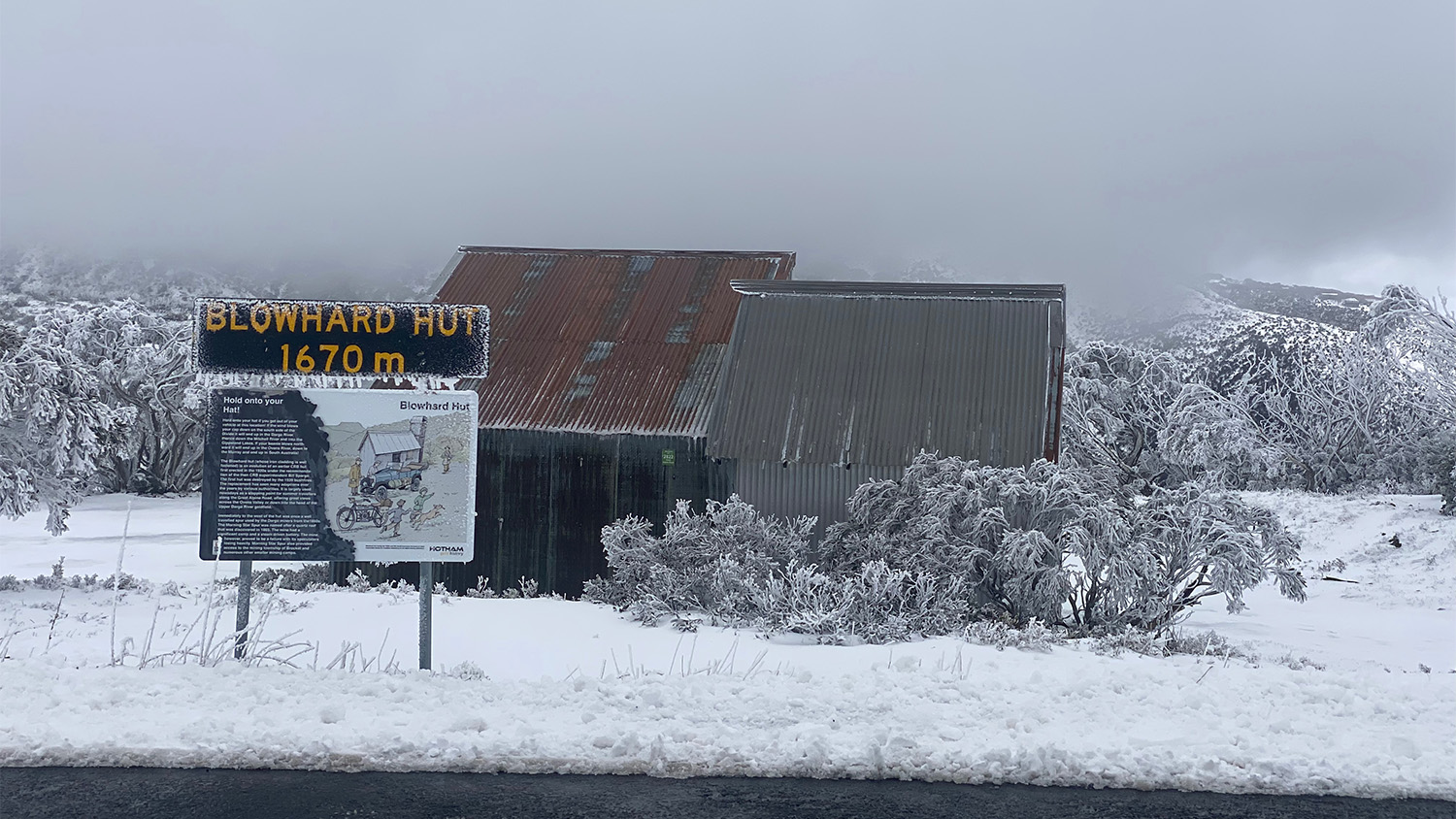
Rain, wind and then some snow. A race report of the Great Southern Endurance Run (GSER) 100 Mile event in November 2021. Terrible weather force a course change, but overall a wonderful event with epic displays of true grit from all participants and volunteers.
What a wild ride! GSER was meant to be an adventure of epic proportions, and it certainly delivered a unique adventure. The Great Southern Endurance Run is an out-and-back run from Harrietville, Victoria with 100 mile, 50 mile and 28km race options that takes runners through some relentless and amazing alpine scenery. I was excited to have this as my first 100 mile run, and had been putting in a significant amount of training (which was hampered somewhat by lockdowns).
Two days before the race we received an update from the race directors - due to the forecast of severe weather across the region (the 100 and 50 mile courses take you across some pretty exposed peaks and ridgelines) the course had been changed from the original course, to 6x loops of the 28km course or 3x loops for the 50 milers. Although a course change is always going to be jarring, it's great to see the race directors taking safety of the runners and volunteers so seriously (which is also reflected in how serious the team is taking mandatory gear).
This is obviously a significant change, and it was going to bring it's own unique challenges both mentally (to cope with the repetitive loops) as well as physically - the 28km course encompassed the biggest climb of the race, as well as 10km of downhill running.
The climb of the course was the North West Spur ascent. This is a steep climb that gains you well over 1000m of elevation in around 3km. Needless to say it's quite tough to do it once, let alone multiple times. This is followed by a jaunt along a walking track just below the ridgeline, before a long descent back down Bungalow Spur to the start/finish line.
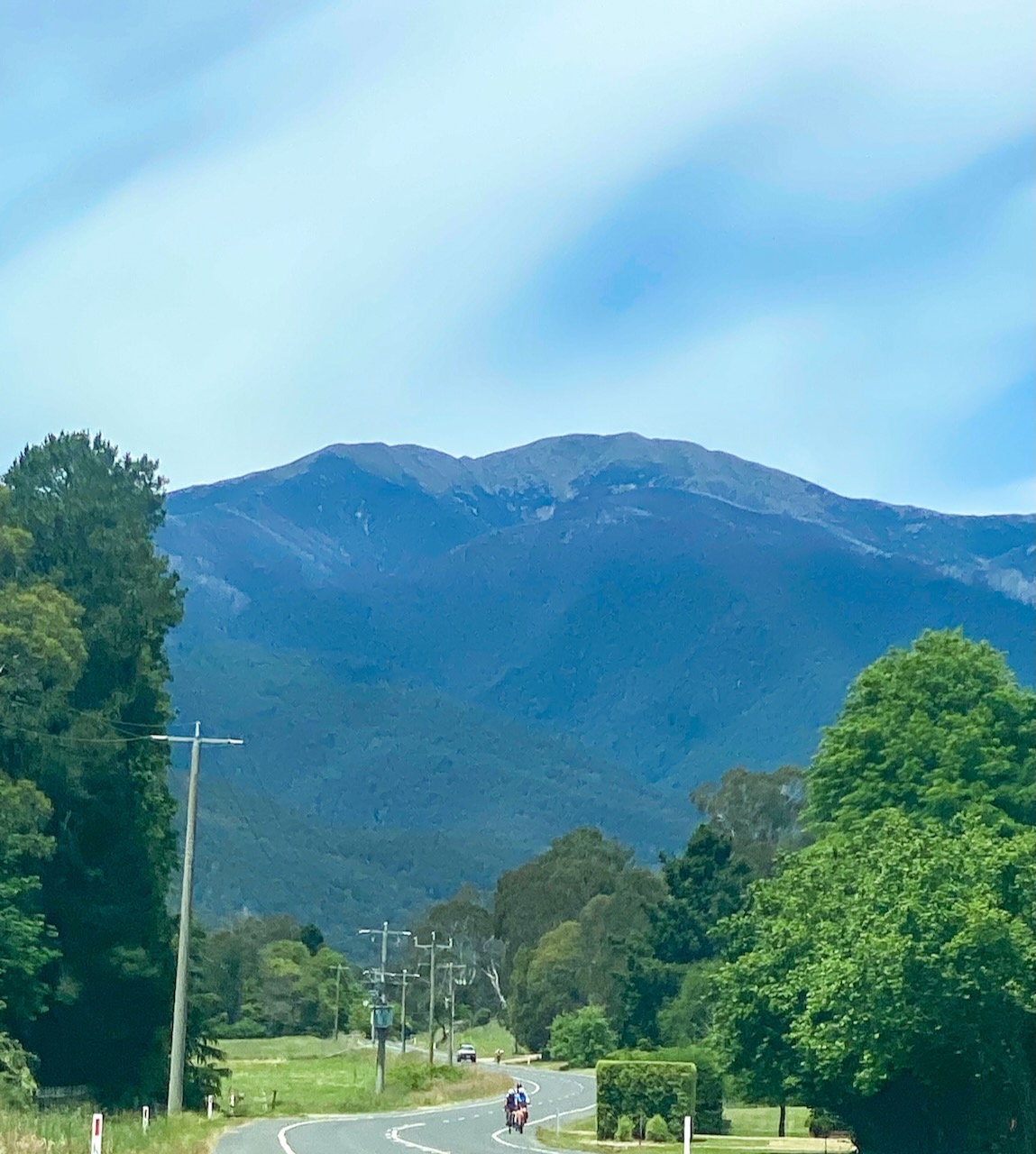
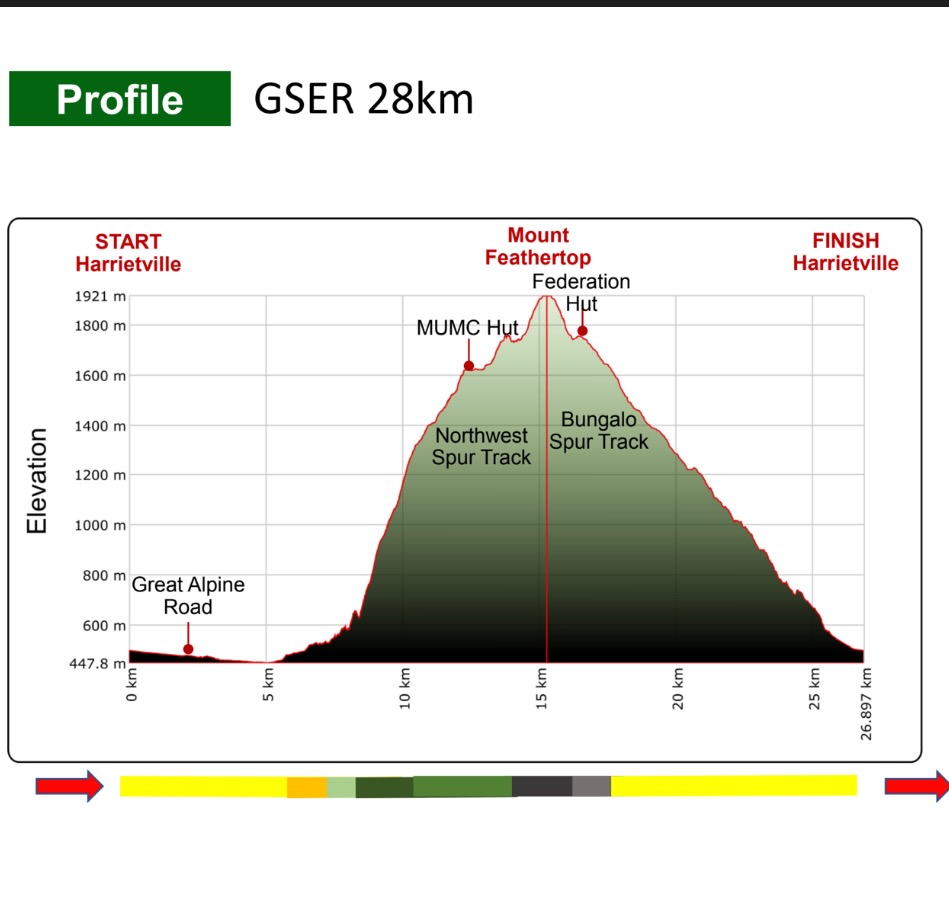
On the positive side, the new looped course made logistics for my support crew so much easier, since they just needed to walk down from the accommodation (in the pouring rain) each time I was about to come in.
The weather had been beautiful and sunny on the drive down the day before the race, but on race morning I woke up at about 0430 to the sound of an absolute downpour, which was a good start and was to set the scene for the weather during the rest of the weekend.
Prior to the start, we picked up our GPS trackers, then all either huddled under gazebos or just stood around in our rain gear waiting for the start.
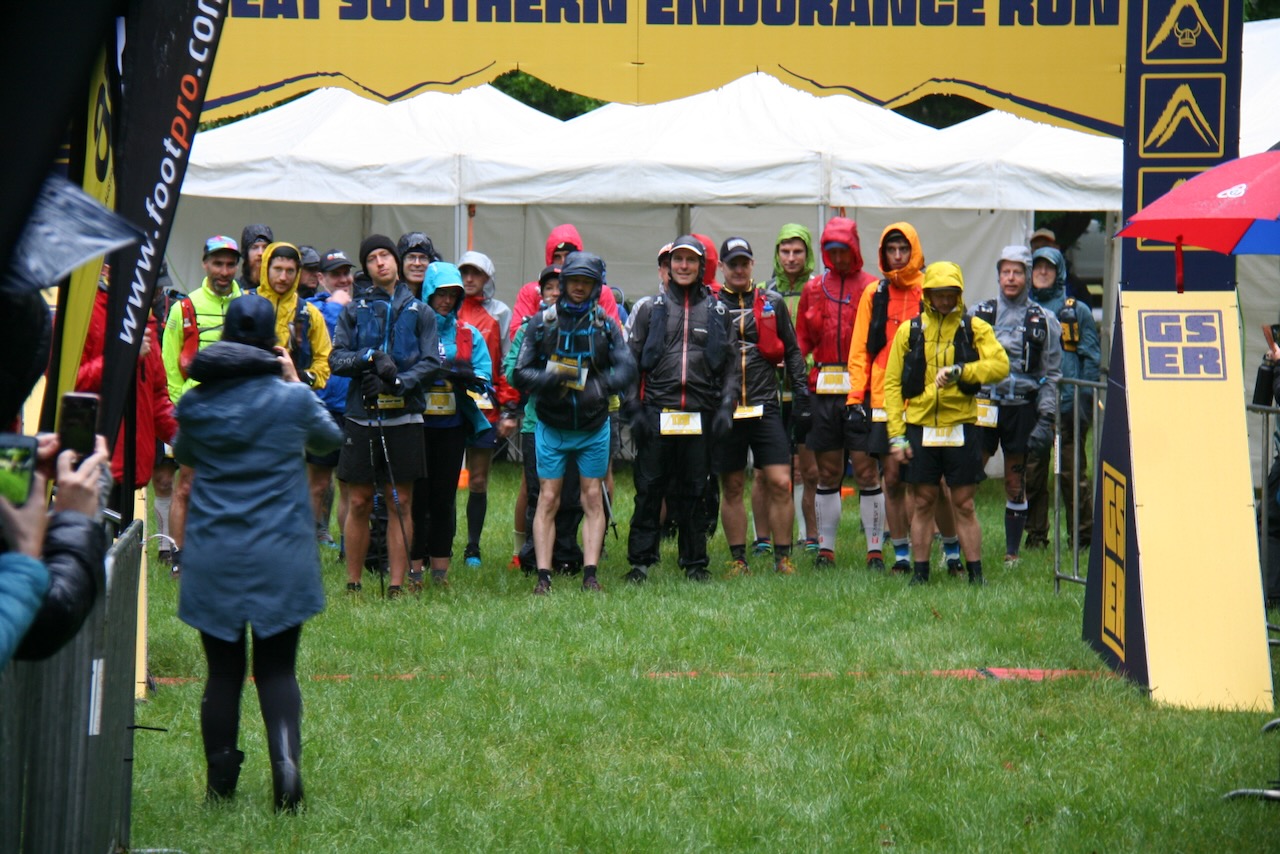
The start came around and we sloshed our way out of the start/finish area. I started off lap one way too hard, as is tradition, and took off down the road much closer to the front of the pack than I should've been. I wasn't looking at my watch with it under my rain jacket, and it turns out I'm not great at judging relative effort at the start of a 100 miler.
5km down the road and we hit the Trout Farm, starting us off onto the gently rising, then undulating Tom Kneen track, complete with a river crossing hopping across some stones. Not long after the river crossing, the climb starts in earnest. I was trying to judge a super easy pace up the hill, and didn't feel like I was working too hard but overtook a couple of people on the climb (which in hindsight should've been a warning sign).
Part way up the climb, a text message was sent out to advise that we would not be going to the top of Mt. Feathertop due to the weather conditions.
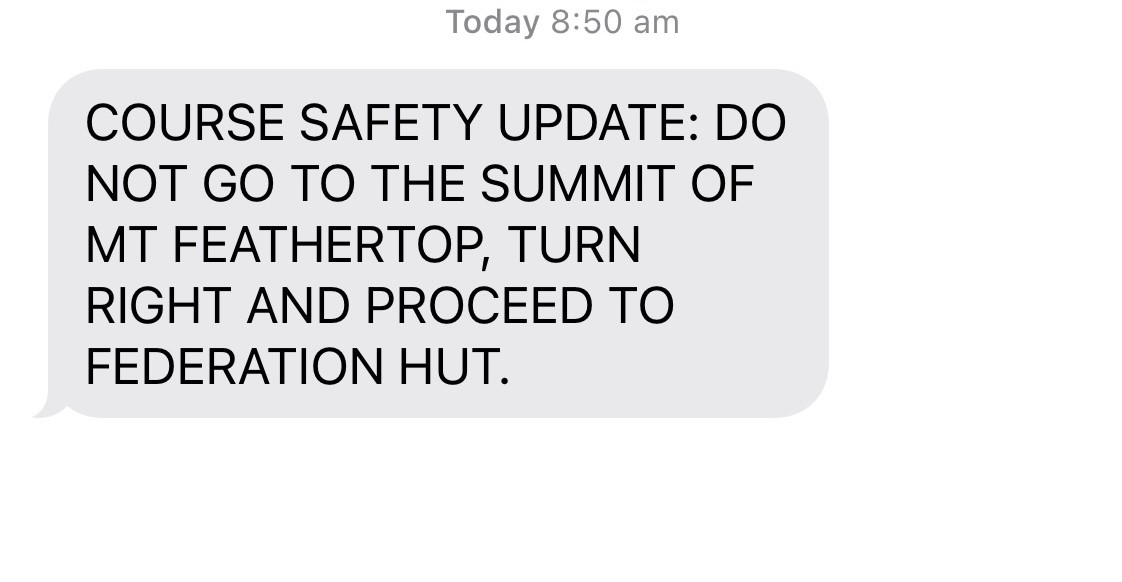
Eventually I got to MUMC hut which indicated the top of the major climb. A quick selfie at the hut and I was off along toward the ridgeline. The track along here was very waterlogged, and it was impossible to avoid getting wet feet. After a couple of km (and a short chat and thank you to the soggy volunteers telling us not to head up to the summit of Feathertop) I hit Federation hut and started the descent.
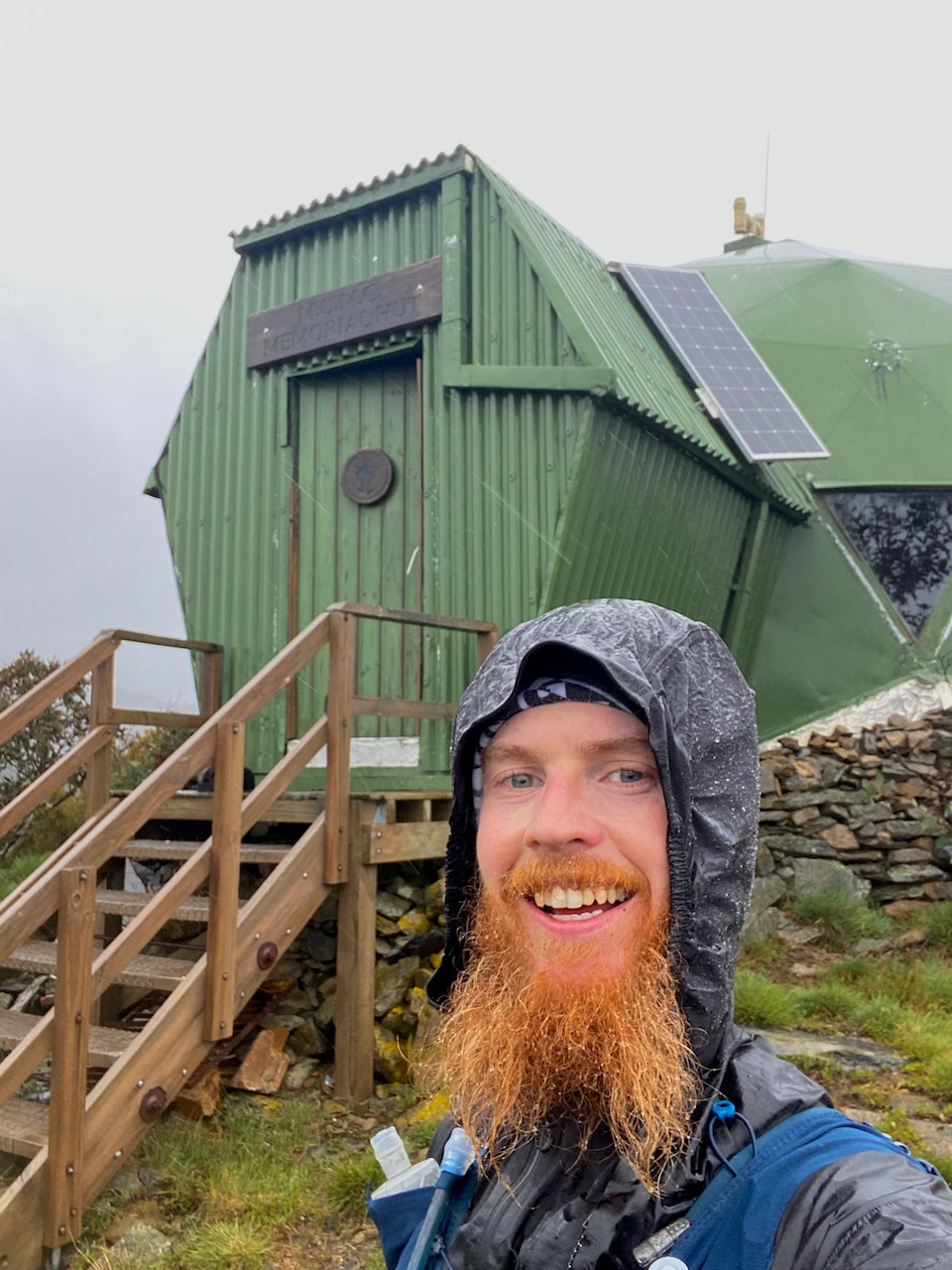
At this point the rain had stopped and I was having a blast on the descent, so I bombed my way down the spur (again way too fast and hard for the first of 6 loops) and got into the aid station where my lovely crew were waiting.
The first lap was completed in about 3.5 hours. Probably not a sustainable pace.
All I did at the aid station was top up my water, grab food for the next leg and then just wanted to get loop 2 done. I'd been hitting my nutrition goals on the first lap, but oddly my stomach was a bit sore on the descent so I was a little concerned.
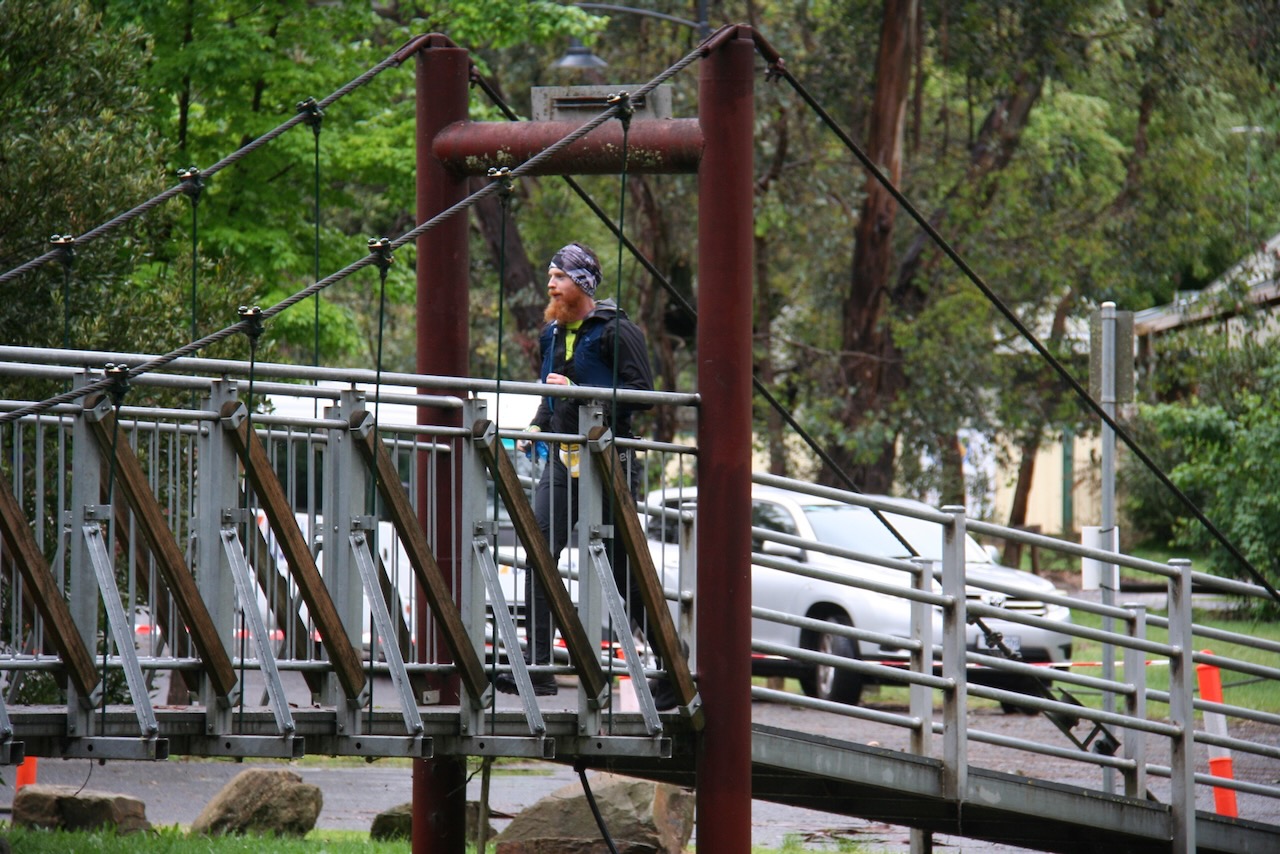
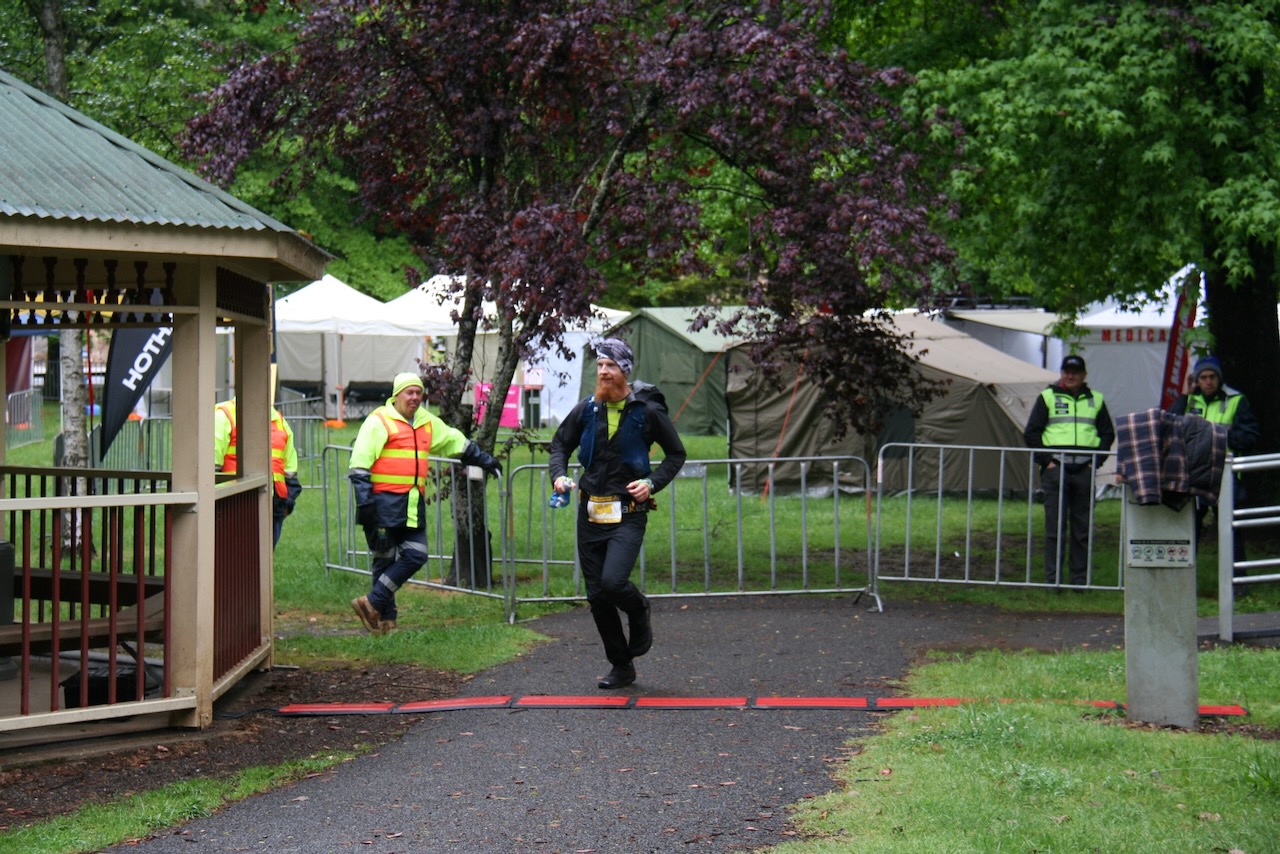
To try to make sure I went a bit easier I adopted a walk-run strategy through from the trout farm to the start of the ascent, and tried to go generally easier on the climb. I started to feel quite rough during the climb - my legs were feeling more fatigued than expected, and I started to feel really dehydrated. I went through both flasks, and whilst I still had electrolyte solution in my bladder at that stage all I wanted was water.
I knew there was a spring along the track below Feathertop, so I was aiming to get there and refill with water. The climb just went on forever on this loop, I knew the hut signaled the top of the climb but the hut just never appeared.
Eventually I made it to the top and started off making my way to the spring. I topped up with water, but it just didn't seem to quench what I was feeling (all it really achieved was giving myself a brain freeze from the cold mountain water).
I continued along the track to Federation hut, gave the Endurance Medical Services folk a wave and started the descent.
I got back into the aid station at just under 4 hours for the loop. Not as slow as I had been planning to go. This time I made sure to stay sitting down for a few minutes and get some food in me. I wasn't feeling great, and had hardly eaten anything on loop 2. The race directors came to have a chat with me, which was lovely, and the medical team checked in on me to see how everything was going.
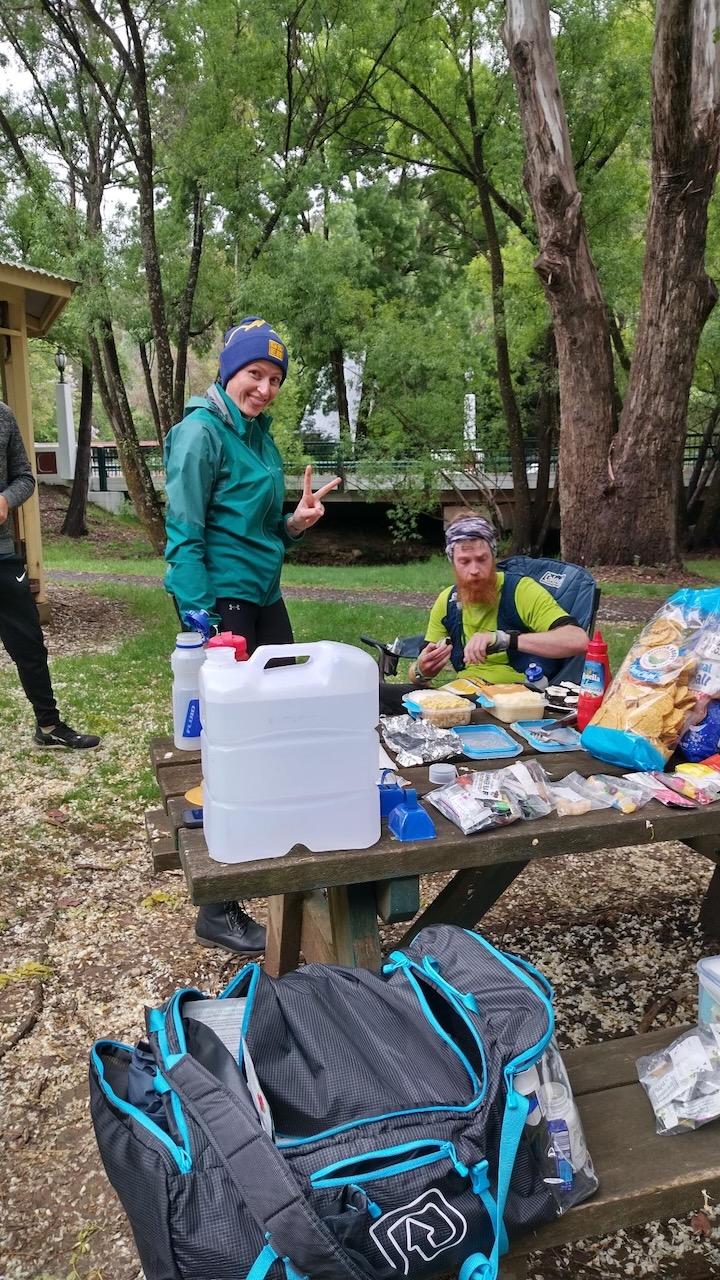
After about 10 minutes I got up and started off on loop 3, making sure to include a walk-run on the 5km road section and all the way to the climb. Unsurprisingly, the creek crossing was getting higher with the stones now completely submerged. My legs - quads specifically - were feeling really rough. I'm still not sure if it was the climbing or the extended downhill that got them.
The course was quite tough - After the first 5km there were no flat sections at all, you were either going up or going down and it does get reasonably technical in places.
The climb went better on the 3rd loop than it did on the 2nd. I topped up with water at the creek before starting the climb so water wasn't an issue, and I was getting more food down so was generally feeling a bit better about life.
As I came out from the hut I realised the weather up the top had really deteriorated - the temperature had dropped, the wind had come up and it was raining again. I had already put my rain jacket back on, and in hindsight I should've turned around and gone back to the MUMC hut to rug up before traversing across to the next hut. I (stupidly) pushed on, thinking I could find a sheltered area to at least put my gloves on. There was no sheltered area, and by the time I got across to Federation hut my hands were real cold, and starting to have initial signs of mild frostnip.
A stark reminder to treat the mountains with the respect they deserve. Mt Feathertop is somewhat unique amongst Australian mountains in that it rises quite steeply from the surrounding landscape, and is totally exposed. You can get yourself into serious trouble up there.
The medics at Federation Hut offered their warm fire inside the hut, which was tempting, but I decided to continue on down the track where it was warmer below the treeline. My hands quickly recovered, but I had had enough, and was already seriously considering withdrawing. By the time I made it to the bottom I had all but made that decision.
Breaking the news that I didn't want to continue to my crew was going to be difficult.
I got back to the aid station and sat down whilst my crew fed me, and I talked over what I was feeling and thinking. I made the decision to withdraw, after 75km and 4200m elevation gain.
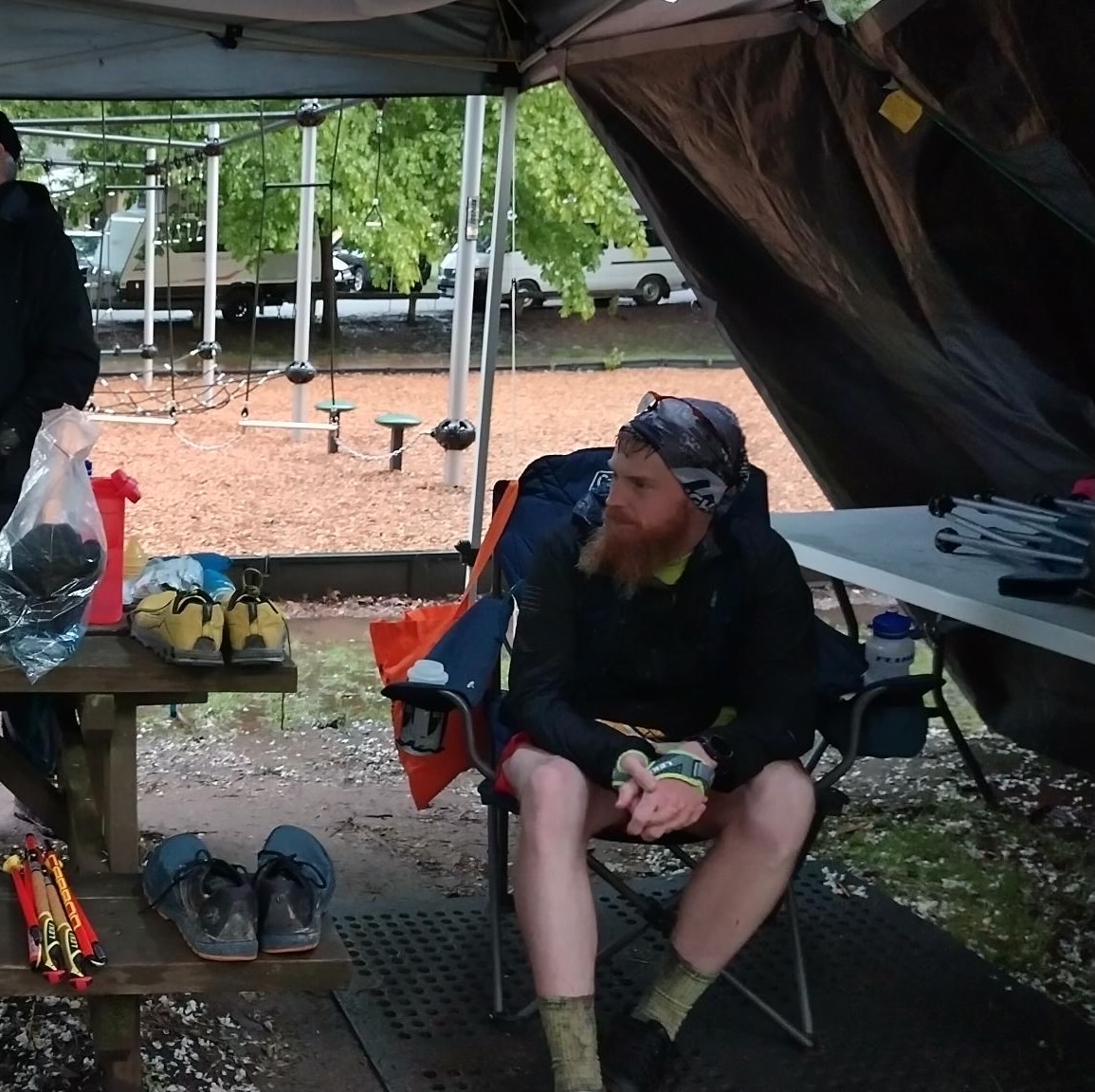
My line of thinking was essentially that this isn't the original course I was meant to be running (the race directors did an amazing job to still run the event, it was simply a case of uncooperative weather) and I don't need to be running these loops just to prove that I can run the distance - this was somewhat of an epiphany, in that a large part of why I want to do these runs is to get out into the amazing remote areas as part of the course.
My crew were fully supportive, and I think somewhat relieved given the conditions. I was disappointed not to be continuing, but ultimately did not feel a sense of regret. 75km with 4200m elevation gain in 12 hours is still an achievement I'm happy with.
A massive thanks to my amazing support crew who I feel had a more difficult job than I did, and to all the volunteers, the team from Endurance Medical Services and the Race Directors for putting on a great event in challenging conditions.
Mistakes and post-race analysis
I put quite a bit of thought into why things went poorly for me at GSER, and have come up with a few things:
- I didn't need to finish. Mentally, this is a huge roadblock. I had the epiphany that much of my long running takes me to some pretty cool places. I didn't need to run 6x loops just to prove that I can run the distance. In addition to this, I wasn't focussing on enjoying the run like I normally do, which increases mental fatigue for me.
- I may have been overtrained. I put in a lot of time on my feet in the leadup, but it may have been too much. This is something that I'll look at tweaking and figuring out in future. After a bit of reflection on how I'd been feeling lately, I may have also been under-fueling during training leading to under-recovery, particularly after reading this timely Trail Runner Magazine article.
- I went in with too much latent stress. This isn't always avoidable, but it's important to be aware of due to how general life stress also affects the body.
- I took the first (and second!) lap way too hard, and I need to improve at gauging relative effort and pacing without relying on a watch. I feel that this is something that simply comes with experience.
- In hindsight I probably needed better downhill training. I had trained on a lot of hills, with a lot of elevation, and included downhills, but I didn't train for a 10km descent every few hours.
Later in the weekend we went for a drive up the mountain to where the original course would have intersected with the road. There was a significant amount of snowfall for mid-November, reinforcing that the Race Directors made the right call in changing the course!

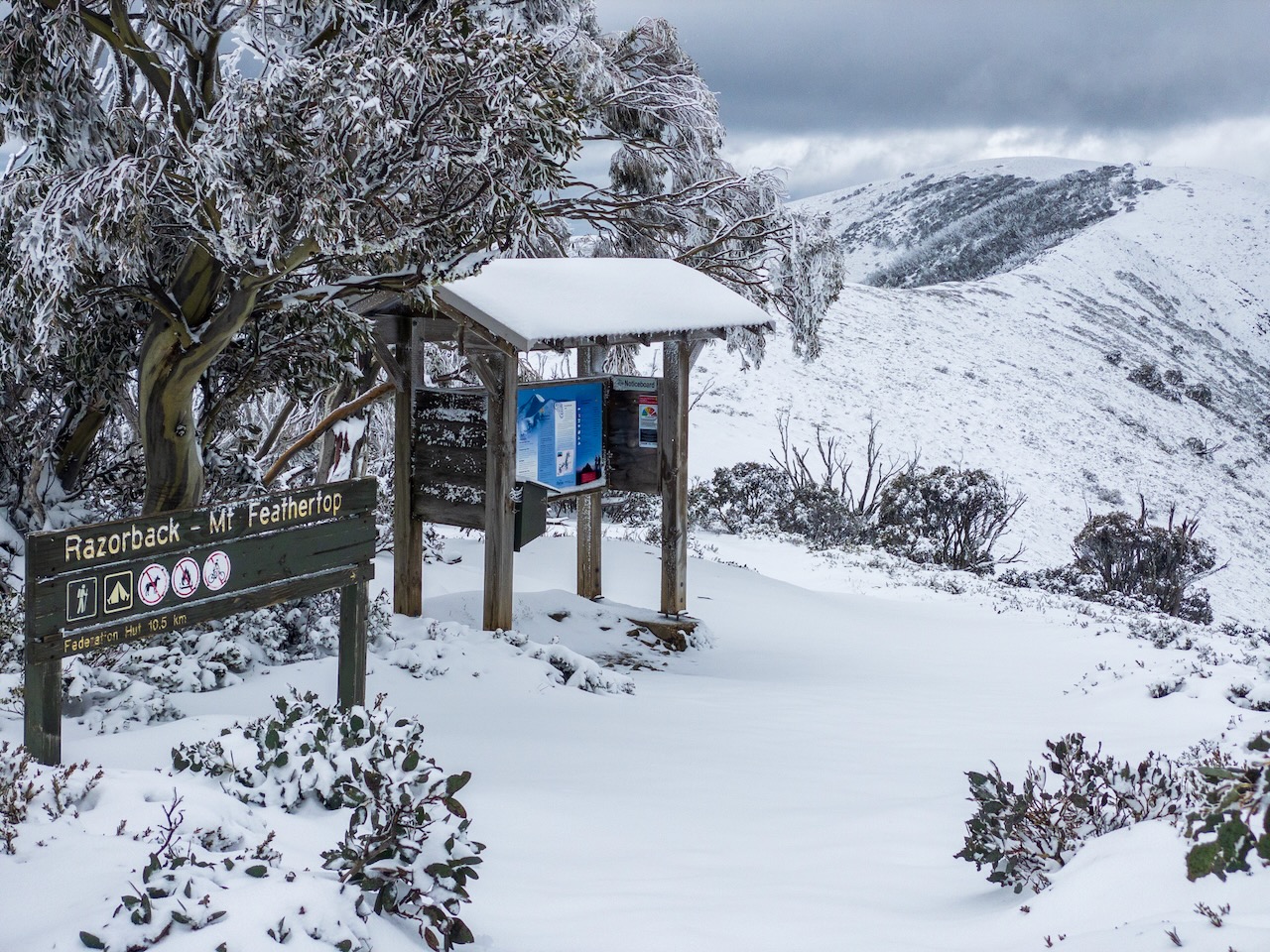
What's next?
I still want to complete a 100 mile run, of course.
The positive of pulling out after 75km means I'm already feeling pretty well recovered, but the next few weeks will be resting, recovering, possibly some other sports like cycling and bouldering whilst I plan out what I want to do in 2022.
At this stage I think I'll be planning to come back for redemption at GSER 2022!